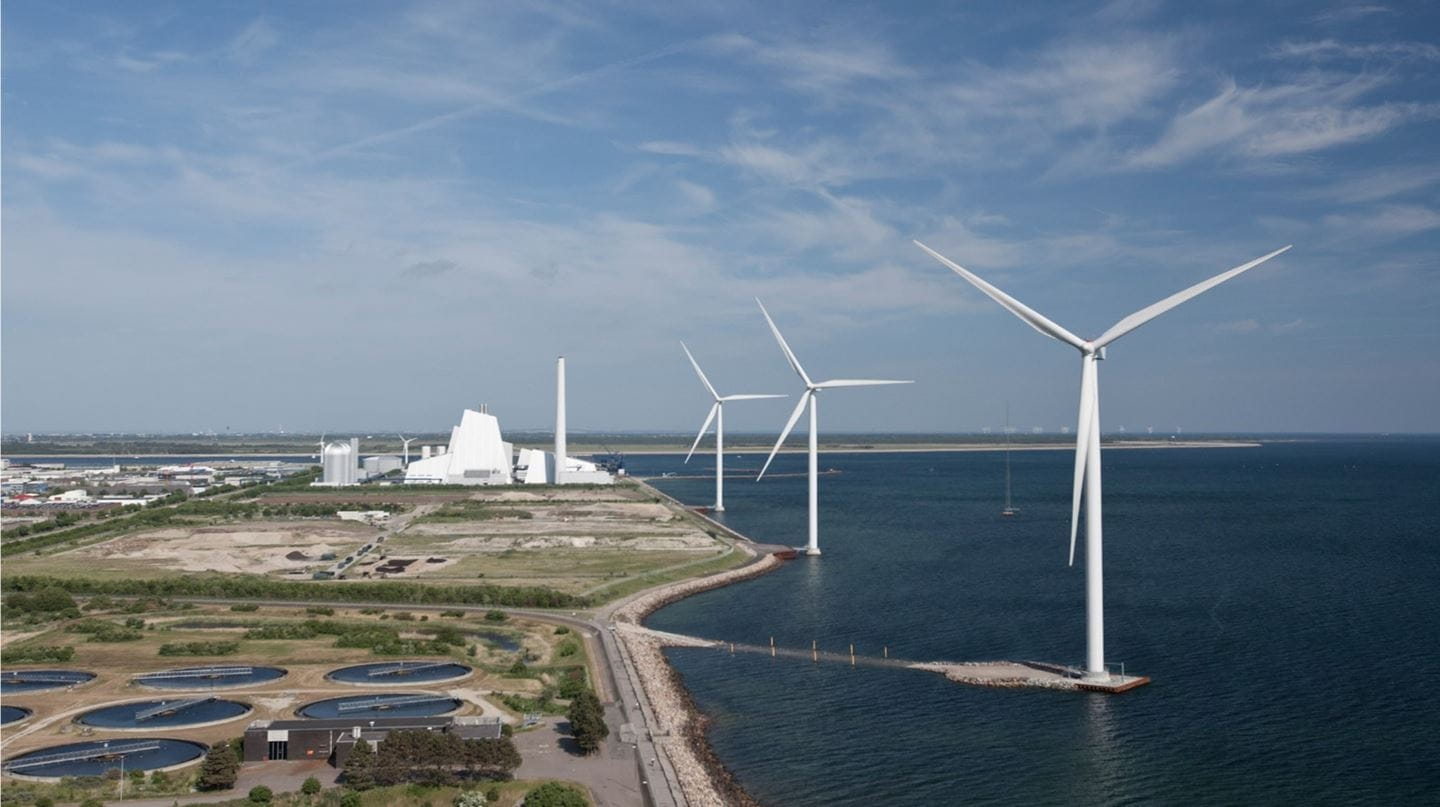George Harvey

The Danish energy firm, Ørsted, develops plans to harness offshore wind energy to produce “green” hydrogen. Image: Ørsted.
It seems “green hydrogen” has a presence in the news that grows every month. Also, news articles talk about increasingly large amounts of money being spent on it. Big corporations, utilities, and national governments are putting up many millions of dollars, in some cases billions of dollars, to get production ready for something that nobody seemed to care about only a couple of years ago.
Hydrogen is very abundant. Every molecule of water has two atoms of hydrogen bonded to one of oxygen. In fact, the word “hydrogen” means “water maker,” because when it burns in air the only product is water. Among other things, hydrogen can be used as a fuel, for refining metals, or to make chemicals, such as ammonia.
There are downsides to hydrogen. Right now, it is rather expensive. Storage can be a problem. It is not really possible to compress it to a liquid at room temperature, though you can liquefy it, if you cool it to 20.27°K (−252.88°C, −423.18°F). It is not difficult to compress it and use it as a gas to fuel vehicles, but that would take a big tank because a volume of compressed hydrogen might have only one quarter of the energy of the same volume of gasoline.
Today, 95% of the hydrogen that is available commercially is “gray hydrogen.” Manufacturing gray hydrogen uses a fair amount of energy, which is needed to strip the hydrogen atoms out of methane. The carbon in the methane typically reacts with oxygen to make carbon dioxide (CO₂), the greenhouse gas.
Green hydrogen, by contrast, creates the gas directly from water through electrolysis, and though this uses even more electricity than gray hydrogen, the electricity in the process is carbon-free. There are no CO₂ emissions directly associated with green hydrogen, just hydrogen and oxygen, and the oxygen can be released without long-term danger.
Hydrogen can be made to reduce curtailment of renewable generators, such as wind turbines. Times come when the wind is blowing, but the electric grid already has as much electricity as it needs to supply demand. A wind farm can’t just dump electricity onto a grid without demand, so the grid operator can order it to curtail the turbines. The wind may be blowing, but the turbines are not allowed to make electricity. A plant that can use electricity from wind turbines to power electrolysis can make electricity to fuel the electrolysis process instead of being curtailed. That means the cost of the electricity, which is the greatest part of the cost of green hydrogen, can be brought very low.
Hydrogen can be used as a fuel. It actually can be put through an internal combustion engine that has been adapted for the purpose, but the efficiency would be low, because internal combustion engines are by their nature inefficient. On the other hand, hydrogen can be used to create electricity in fuel cells, and that process is far more efficient, in terms of the work you get from a given amount of fuel.
We will probably never drive cars with liquid hydrogen in them because of the storage problem. Ships might be fueled by the liquid, or maybe even trains, but not road vehicles. On the other hand, hydrogen is so light that large containers of the pressurized gas could be carried in aircraft, and some studies show it would deliver more work per weight than batteries.
Another way to use hydrogen in fuel cells is to use it to make another chemical that can easily be stored and used with a fuel cell. Ammonia is one example. It is far heavier than hydrogen, but it can be liquefied fairly easily, and a fuel tank could contain enough ammonia to move a vehicle pretty far, compared to one the same size containing hydrogen.
The cost of green hydrogen is falling at a rate of about 10% per year, as the electrolysis technology improves and the cost of renewable energy from the sun and wind falls. This puts it on track to take up the electric load at times when demand outstrips supply. Green hydrogen can then be used to balance the grid just as batteries do. As costs fall, green hydrogen will put increasing pressure on the use of oil and gas, reducing the emissions of fossil fuels.








Leave a Reply